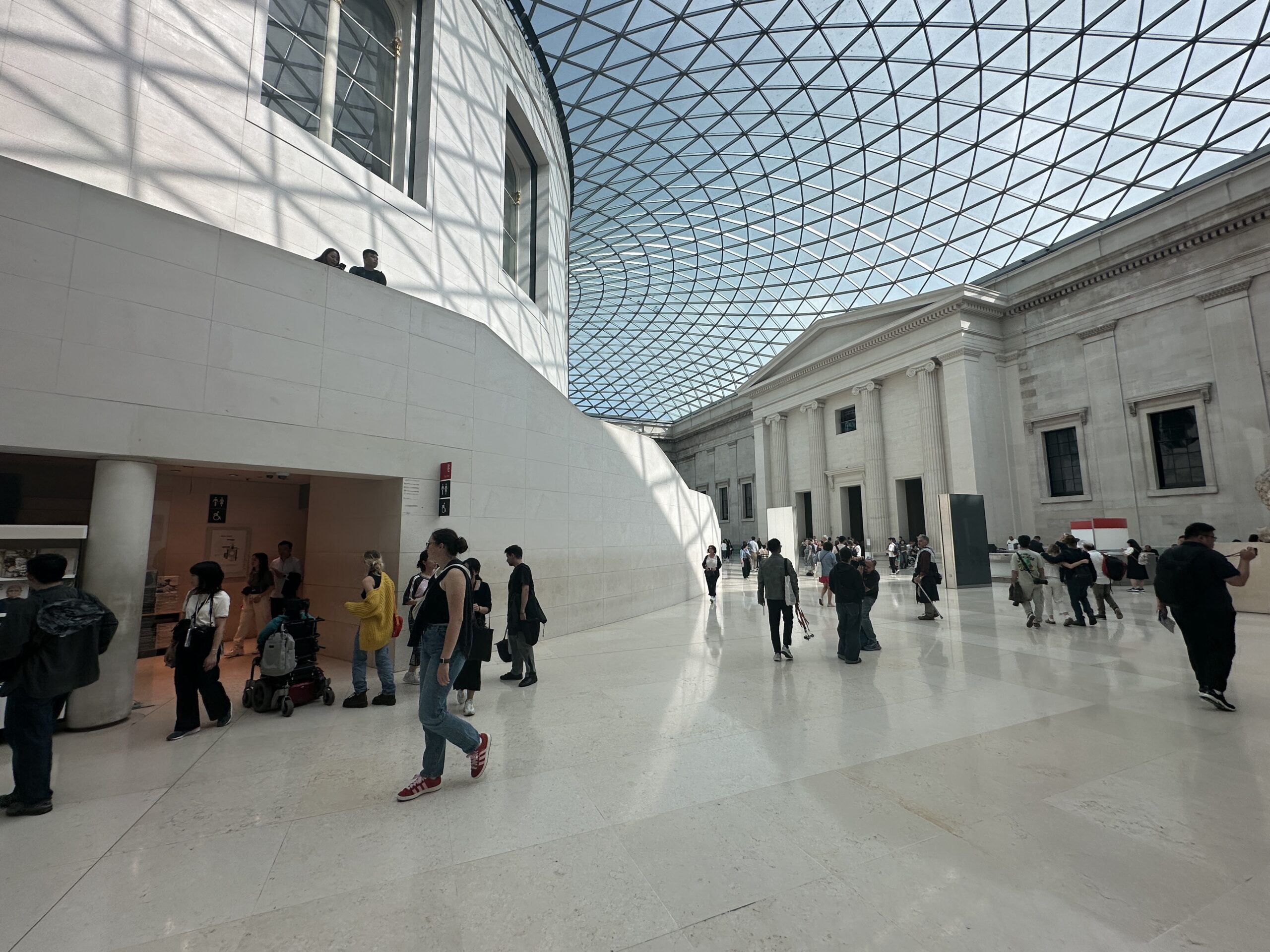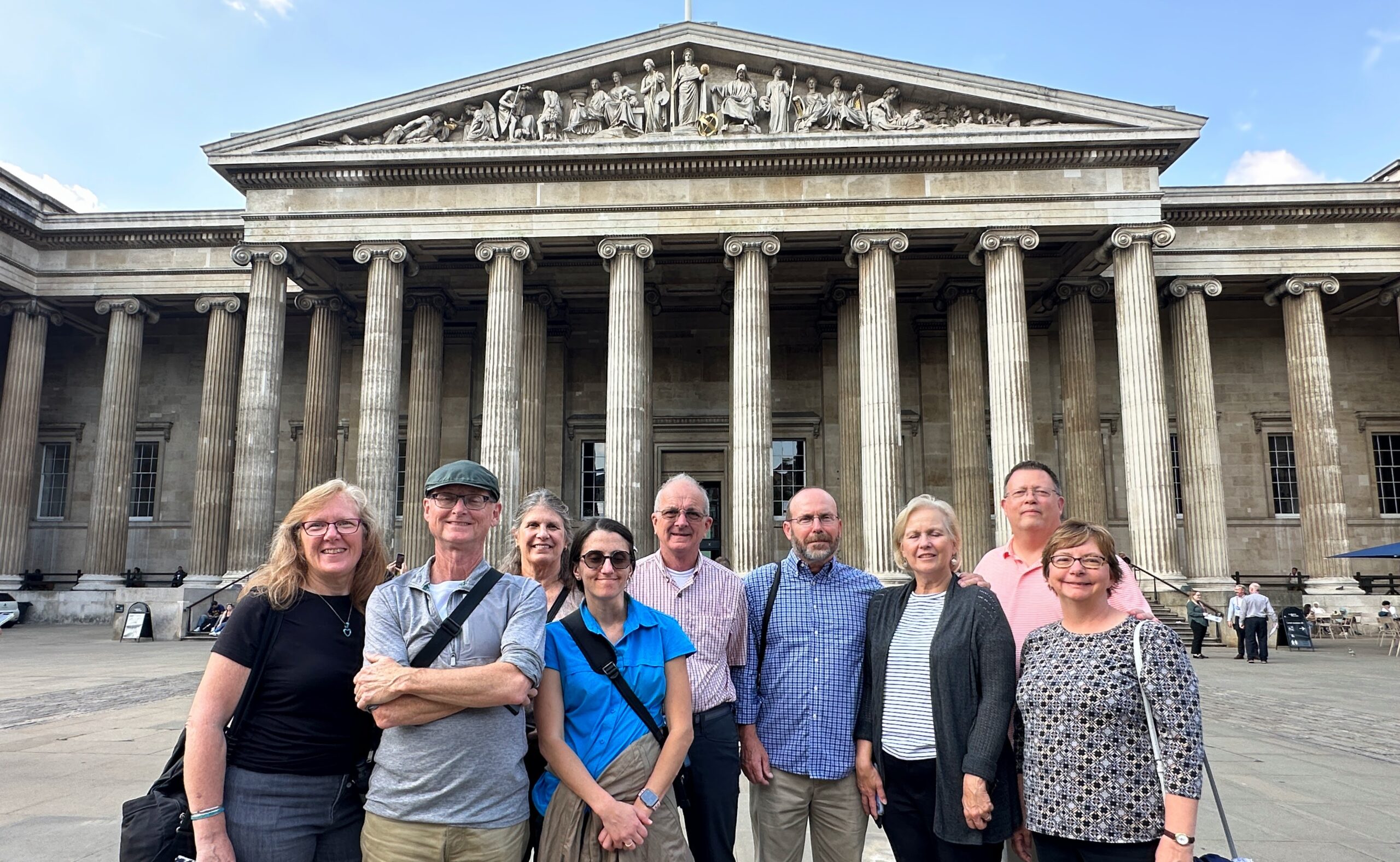
Top 10 Archaeology Finds in the British Museum
Just imagine stepping into the British Museum, where history whispers stories from the past! If you have an interest in the fascinating connections between the biblical narrative and archaeological discoveries, you’re in for a treat. In this list, you will explore some amazing archaeology finds housed in this iconic museum. Each artifact offers a glimpse into the ancient world, enhancing your understanding of biblical texts or ancient history. Let’s launch on this intriguing journey together!
Rosetta Stone
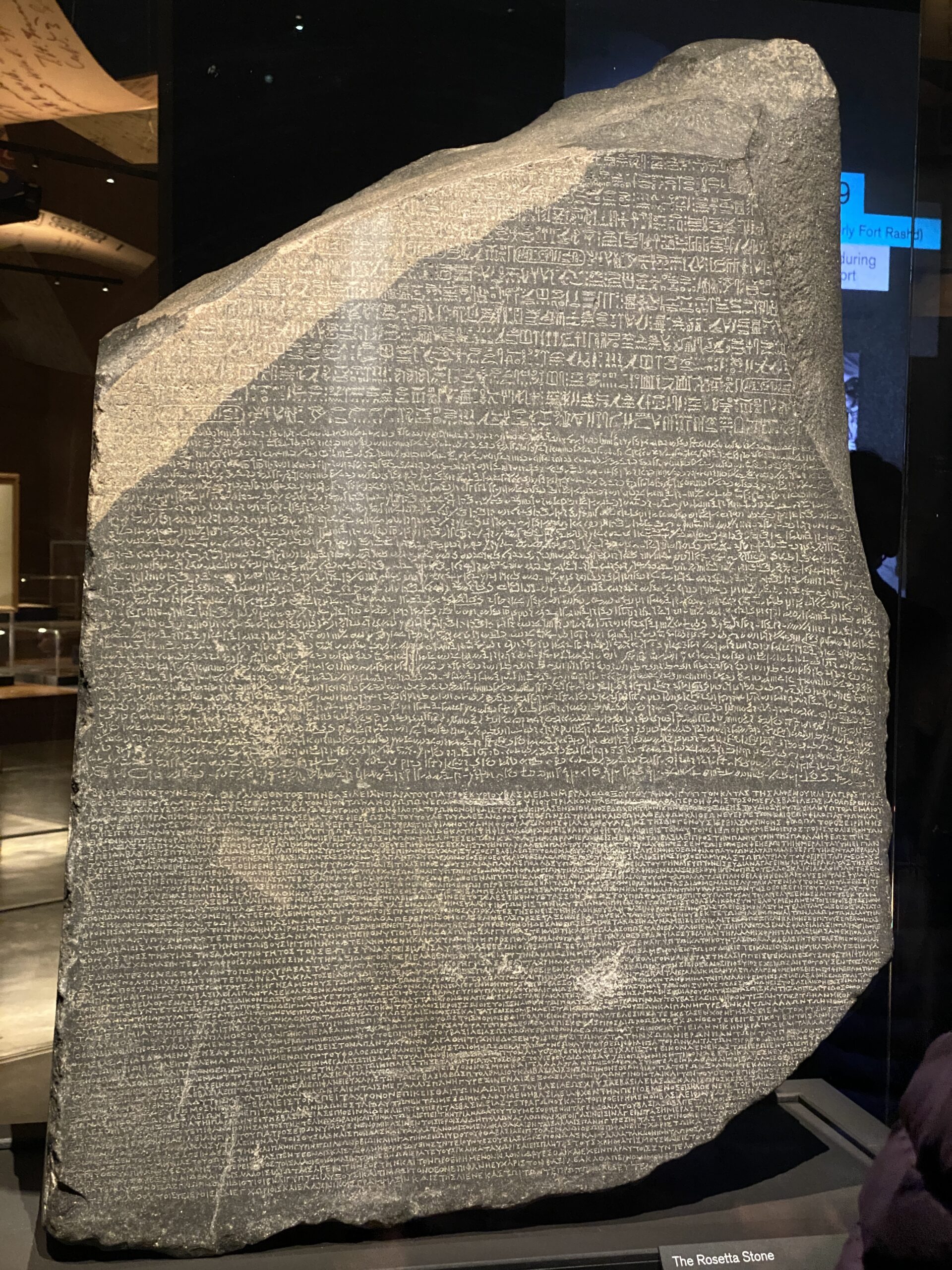 The Rosetta Stone is one of the most significant artifacts housed in the British Museum. It played a pivotal role in deciphering Egyptian hieroglyphs and opened the doors to understanding ancient Egyptian civilization. This intriguing stone, carved with a decree in three scripts, offers you a fascinating glimpse into the past, making it a must-see during your visit.
The Rosetta Stone is one of the most significant artifacts housed in the British Museum. It played a pivotal role in deciphering Egyptian hieroglyphs and opened the doors to understanding ancient Egyptian civilization. This intriguing stone, carved with a decree in three scripts, offers you a fascinating glimpse into the past, making it a must-see during your visit.
Key to Egyptian hieroglyphs
The Rosetta Stone serves as the key to unlocking the mysteries of Egyptian hieroglyphs. With its inscriptions in Greek, Demotic, and hieroglyphic scripts, it provided linguists and historians like you with the tools needed to decode the ancient language. As you explore this artifact, you’ll appreciate how it transformed our understanding of ancient Egypt.
Discovered in 1799
Discovered in 1799 by soldiers of Napoleon’s expedition, the Rosetta Stone was initially a mere curiosity. It wasn’t until later that scholars recognized its significance in translating Egyptian writing. This accidental find in the Nile Delta has since become a cornerstone of Egyptology, allowing you to connect with a culture that thrived thousands of years ago.
The story of the Rosetta Stone began when French soldiers stumbled upon it during their campaign in Egypt. As they worked on fortifications near the town of Rashid (Rosetta), they unearthed the stone, which contained the same decree in three different scripts. Fascinated, scholars quickly realized the potential it held for understanding Egyptian hieroglyphs. After its capture by the British in 1801, the stone made its way to the British Museum, where it remains a highlight of the collection today. Your journey through history truly comes alive as you stand before this incredible artifact!
Assyrian Reliefs
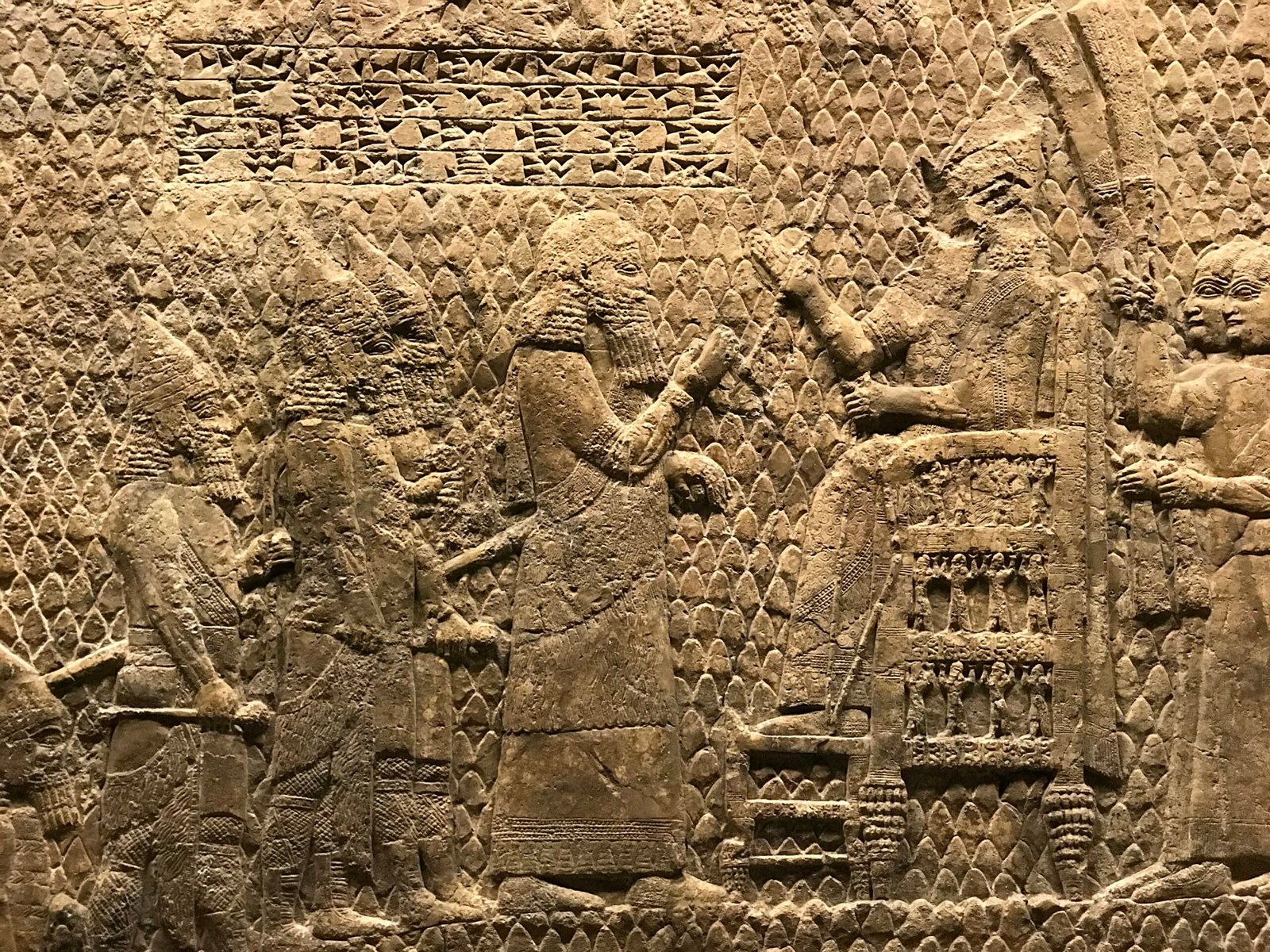 The Assyrian Reliefs in the British Museum are a stunning glimpse into the world of ancient Mesopotamia. These intricate artworks showcase the power and artistry of the Assyrian Empire, featuring scenes that will transport you back in time. You’ll find yourself captivated by the detailed carvings that tell stories of kings, gods, and daily life, revealing the sophistication of Assyrian culture and their significant place in biblical history.
The Assyrian Reliefs in the British Museum are a stunning glimpse into the world of ancient Mesopotamia. These intricate artworks showcase the power and artistry of the Assyrian Empire, featuring scenes that will transport you back in time. You’ll find yourself captivated by the detailed carvings that tell stories of kings, gods, and daily life, revealing the sophistication of Assyrian culture and their significant place in biblical history.
Depictions of Battles
One of the highlights of the Assyrian Reliefs is the vivid depictions of battles. You’ll be intrigued by the dynamic scenes showcasing fierce warriors in action, complete with chariots and horses. These remarkable artworks not only illustrate Assyrian military prowess but also serve as historical records of conquests that shaped the ancient Near East.
From the Palace of Nineveh
The Assyrian Reliefs in the British Museum were once housed in the grand palace of Nineveh, the capital of the Assyrian Empire. As you explore these reliefs, you can almost imagine the grandeur of the palace and the significance these artworks held in ancient royal life. They were designed not just for decoration but as powerful propaganda, illustrating the might of the Assyrian kings and their divine right to rule.
The palace of Nineveh, built by the renowned King Sennacherib in the 7th century BC, was adorned with these magnificent reliefs that depicted various aspects of Assyrian life, culture, and military achievements. As you view these artworks, consider the messages they communicated to both the people of the empire and their enemies. They showcased not only the fierce nature of the king’s campaigns but also his dedication to the gods and the prosperity of his nation. By immersing yourself in these stunning pieces, you gain unique insights into the beliefs and values that shaped one of history’s most powerful empires.
Babylonian Cuneiform Tablets
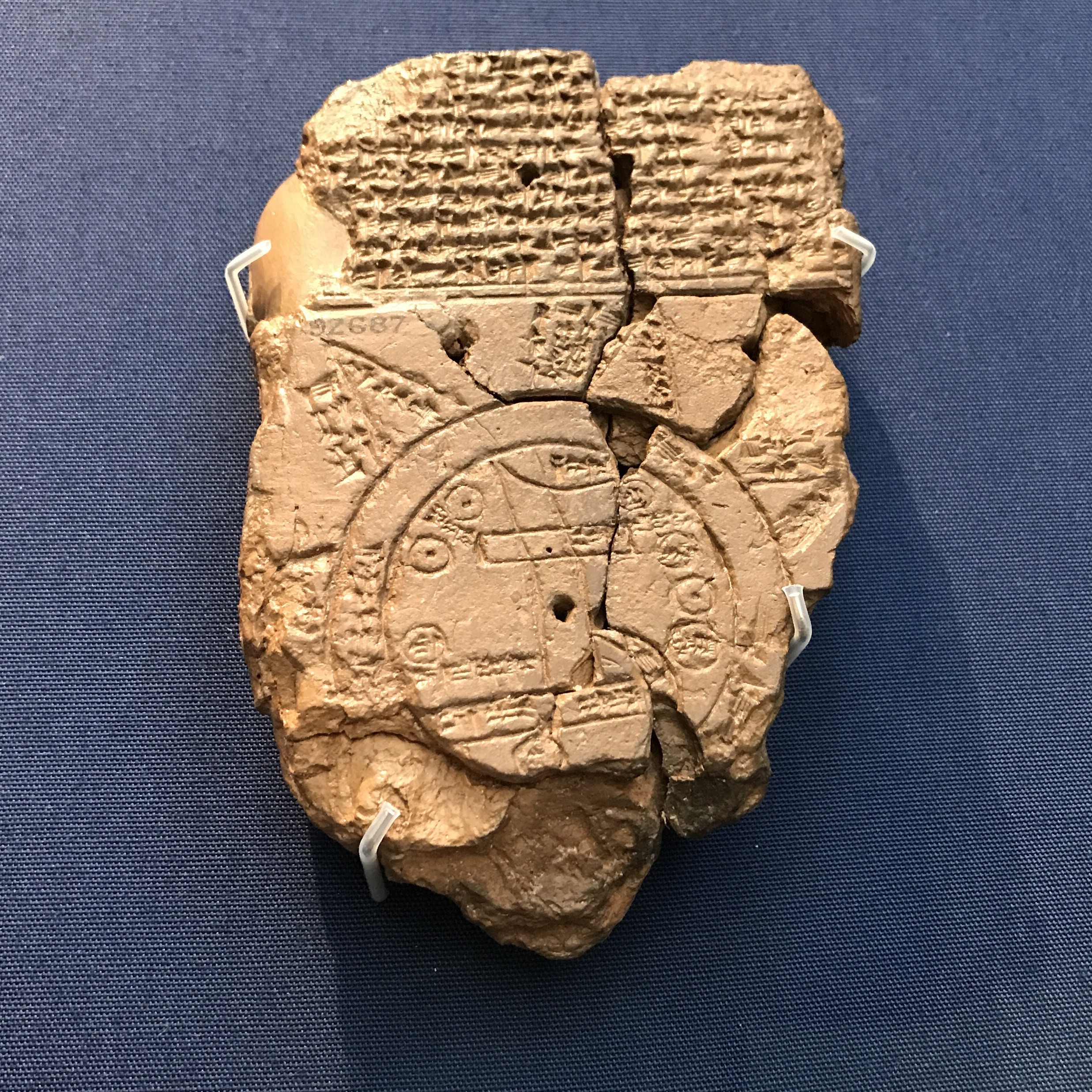 The Babylonian cuneiform tablets at the British Museum give you a fascinating glimpse into the ancient world of Mesopotamia. These remarkable artifacts, inscribed with wedge-shaped symbols, reveal aspects of trade, laws, and culture from thousands of years ago. As you explore this collection, you discover how these tablets serve as a bridge connecting you to one of humanity’s earliest civilizations.
The Babylonian cuneiform tablets at the British Museum give you a fascinating glimpse into the ancient world of Mesopotamia. These remarkable artifacts, inscribed with wedge-shaped symbols, reveal aspects of trade, laws, and culture from thousands of years ago. As you explore this collection, you discover how these tablets serve as a bridge connecting you to one of humanity’s earliest civilizations.
Ancient Administrative Records
Many of these are administrative records etched onto these tablets, showcasing how the Babylonians kept track of their economy and governance. These records provide insights into taxation, trade agreements, and land ownership, allowing you to piece together the organizational structure of an ancient society. It’s amazing to see how administration has evolved since then!
Insights into Daily Life
Diving into the daily lives of the Babylonians, you’ll find that these tablets offer a wealth of information about their routines, social customs, and interactions. From contracts and receipts to educational texts, each tablet reveals the human experience, shedding light on everything from marriage arrangements to recipes. Exploring these everyday documents allows you to connect more personally with the people who lived thousands of years ago.
As you examine deeper into the insights gleaned from daily life in Babylon through these cuneiform tablets, you’ll appreciate the resemblance to your own existence. The tablets showcase mundane aspects, like trade, household management, and even children’s education, reminding you that despite the passage of time, many daily challenges and joys remain universal. It’s a wonderful reminder of the continuity of human experience, making you feel more connected to those who walked the earth long before you.
The Cyrus Cylinder
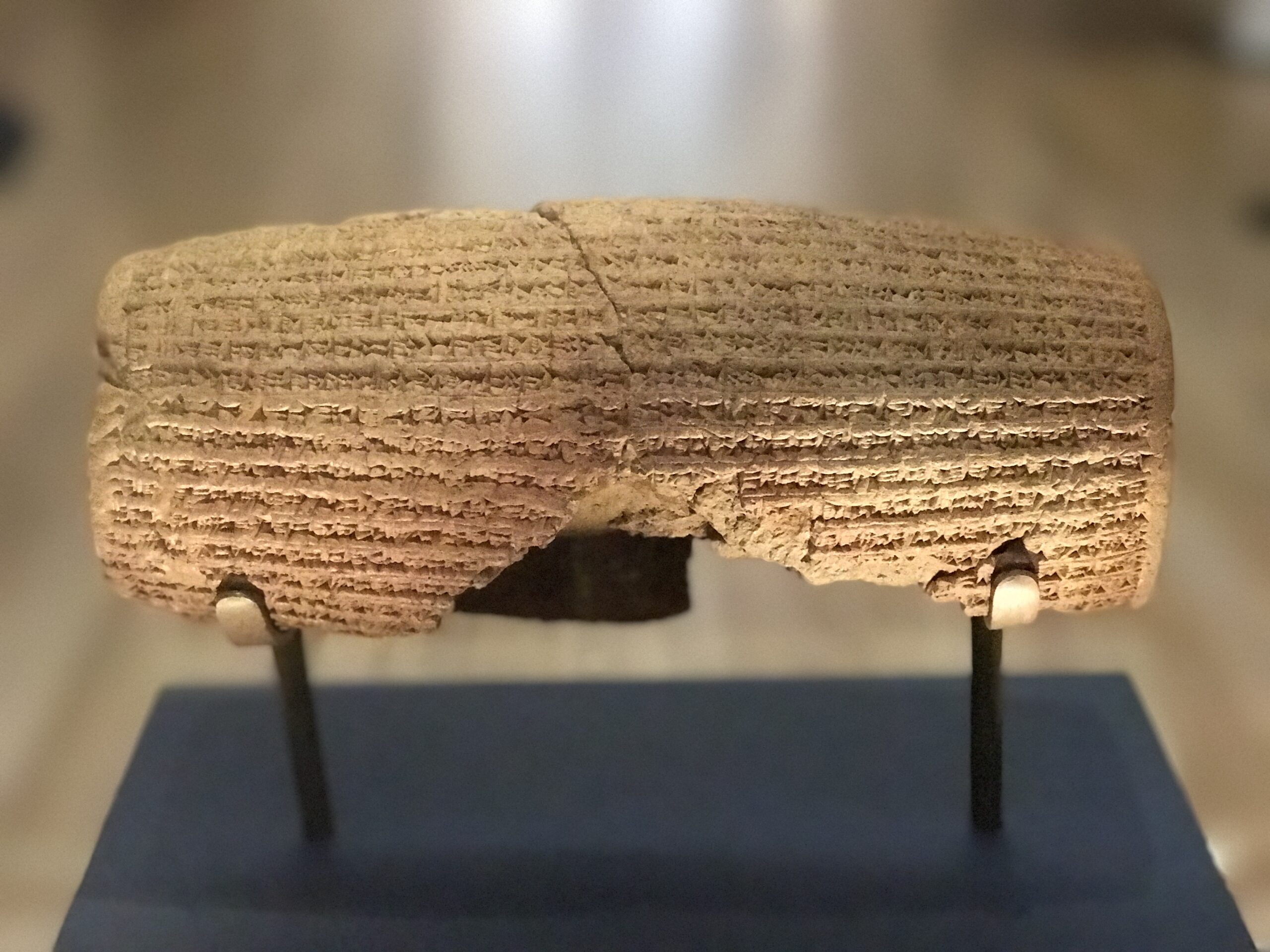
The Cyrus Cylinder is a remarkable artifact housed in the British Museum, dating back to the 6th century BC. This clay cylinder, inscribed in cuneiform, details the achievements of Cyrus the Great and his commitment to restoring the temples and promoting peace in the lands he conquered. It’s often considered one of the earliest declarations of human rights, making it a fascinating piece for anyone interested in biblical history and ancient civilizations.
Early Human Rights Charter
You might be surprised to learn that the Cyrus Cylinder is often referred to as one of the first charters of human rights. It emphasizes the importance of tolerance, respect, and the right to worship freely, showcasing Cyrus’s progressive approach to governance. This makes it an enduring symbol for those who value civil liberties and social justice today.
Decree of Cyrus the Great
The decree inscribed on the Cyrus Cylinder outlines Cyrus the Great’s promises to the people of Babylon after his conquest. It declares his intention to allow exiled peoples, including the Jews, to return to their homelands and rebuild their temples. This decree is significant for its role in biblical history, as it fulfilled prophecies concerning the return of the Jewish people to Jerusalem.
The Decree of Cyrus the Great not only emphasizes the restoration of cities and places of worship but also reinforces Cyrus’s image as a benevolent ruler who respects local customs and religions. For you, this highlights an important moment in history where diplomacy and kindness influenced the fate of many lives. The decree is considered a pivotal step in the Jewish return from Babylonian exile, connecting ancient history to modern discussions on freedom and rights.
Sutton Hoo Treasure
The Sutton Hoo Treasure, one of the most astonishing archaeological discoveries in the UK, holds a wealth of artifacts from the early medieval period. Unearthed in 1939, these items are thought to belong to an Anglo-Saxon king, showcasing the rich heritage of early England. You’ll find yourself captivated by the artistry and craftsmanship of these remarkable pieces, which offer a glimpse into a time long past.
Anglo-Saxon burial artifacts
Among the Sutton Hoo artifacts, you’ll discover an array of exquisite Anglo-Saxon items such as gold jewelry, ceremonial weapons, and intricately designed helmets. Each artifact tells a story of the people who created them and their beliefs about life and death. This collection truly exemplifies the artistry and culture that permeated society during that era.
Rich historical significance
The Sutton Hoo Treasure is not just a collection of beautiful objects; it carries immense historical importance as it sheds light on the Anglo-Saxon era. These artifacts help you understand the societal structure, trade networks, and connections between different cultures during a formative time in English history.
The significance of the Sutton Hoo Treasure lies in its ability to illuminate the intricate world of the Anglo-Saxons. You can see how these artifacts bridge the gap between myth and reality, providing insight into their customs, beliefs, and status. By studying these treasures, you can appreciate the profound impact that these early societies had on the development of English culture, revealing a fascinating narrative that stretches back to the dawn of English civilization.
Roman Mosaics
When you step into the British Museum, the stunning Roman mosaic catches your eye instantly. This piece of art tells stories of ancient life through intricate designs and vibrant colors that have stood the test of time. As you admire it, you’re transported back to a world filled with creativity and craftsmanship that showcases the Roman eye for beauty.
Detailed Artwork
The detailed artwork of the Roman mosaic highlights the skill of ancient artisans. You’ll notice the meticulous arrangement of tiny tiles, which brings to life scenes from mythology and everyday life. Each section of the mosaic tells its own story, allowing you to appreciate the complexity and dedication involved in its creation.
Represents Ancient Life
This mosaic not only provides aesthetic pleasure but also represents ancient life in a profound way. It serves as a window into the values, beliefs, and daily activities of the people who walked the earth centuries ago. You get to glimpse their world, from banquets to lively interactions, enriching your understanding of historical culture.
As you observe the mosaics, let yourself be captivated by the vibrancy of ancient Romans’ lives. Each scene depicted elaborates on their social activities, showcasing their enjoyment of festivities, sports, and family gatherings. By connecting with these visuals, you can better appreciate the rich tapestry of life in ancient times and how they lived, celebrated, and connected with one another, all preserved beautifully in this art form.
Egyptian Mummies
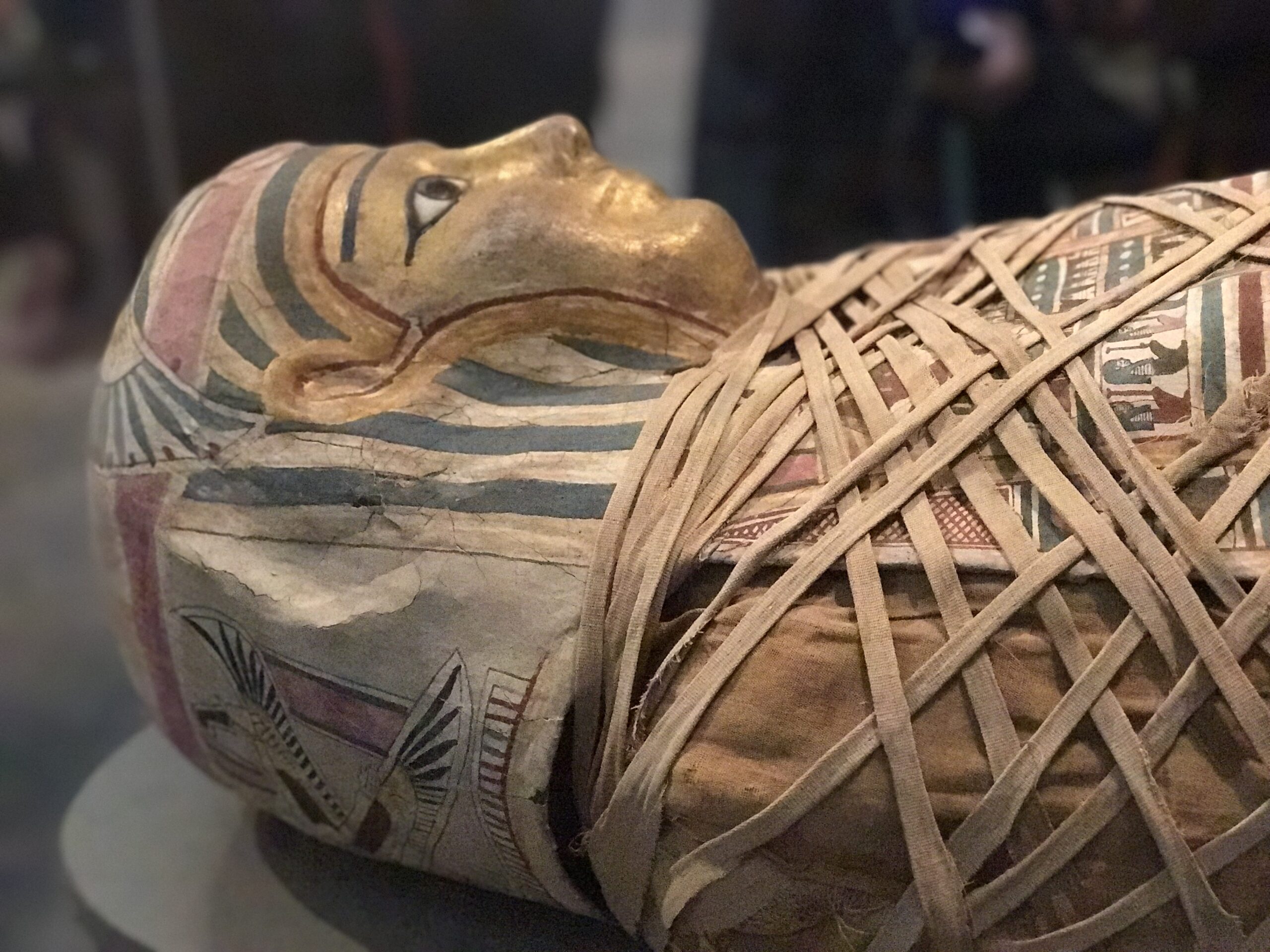 When you visit the British Museum, don’t miss the fascinating Egyptian mummies on display. These preserved bodies give you a glimpse into ancient Egyptian culture and their reverence for life after death. You’ll find these remarkable artifacts beautifully housed, each telling a unique story about their time and technological advancements in preservation.
When you visit the British Museum, don’t miss the fascinating Egyptian mummies on display. These preserved bodies give you a glimpse into ancient Egyptian culture and their reverence for life after death. You’ll find these remarkable artifacts beautifully housed, each telling a unique story about their time and technological advancements in preservation.
Preserved Ancient Remains
The Egyptian mummies you encounter are truly a wonder of preservation. Ancient Egyptians mastered embalming techniques, which is why you can see these remains even after thousands of years. As you view these remarkable specimens, you can’t help but marvel at the dedication and skill that went into keeping these individuals intact for eternity.
Insights into Burial Practices
Your exploration of Egyptian mummies reveals a wealth of information about their burial practices. Each mummy’s wrapping and accompanying artifacts reflect deep beliefs in the afterlife, illustrating how the living honored the deceased. It’s a chance for you to connect with the spiritual traditions of ancient Egyptians and understand how they prepared for what they believed was a journey beyond this life.
As you probe deeper into the insights into burial practices, you’ll discover how different mummies were treated based on their social status and the elaborate rituals that accompanied their interment. You might find it intriguing that many were buried with items like jewelry or tools, believed to be useful in the afterlife. Exploring these details enriches your understanding of how ancient Egyptians faced death and their unwavering belief in immortality. Each mummy serves as a testament to their culture, providing new layers of meaning to your visit.
Hittite Artifacts
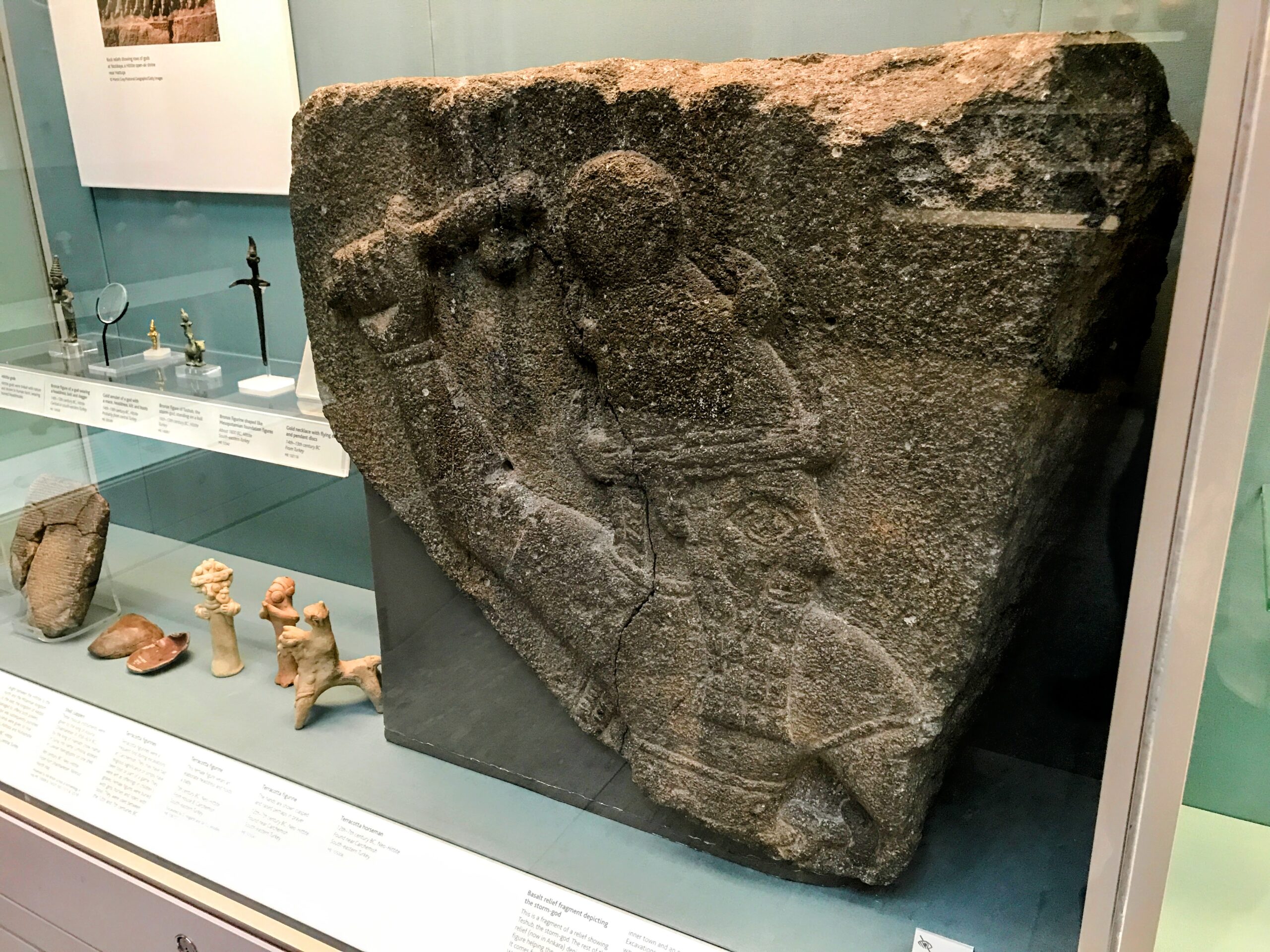 The Hittite artifacts housed in the British Museum offer you a fascinating glimpse into the ancient world. These treasures, ranging from intricate pottery to monumental sculptures, reveal the complexity and richness of Hittite culture. As you explore these items, you will discover the innovative spirit and craftsmanship of a civilization that thrived in Anatolia during the second millennium BC.
The Hittite artifacts housed in the British Museum offer you a fascinating glimpse into the ancient world. These treasures, ranging from intricate pottery to monumental sculptures, reveal the complexity and richness of Hittite culture. As you explore these items, you will discover the innovative spirit and craftsmanship of a civilization that thrived in Anatolia during the second millennium BC.
Evidence of Hittite Civilization
You’ll find that the evidence of Hittite civilization is beautifully presented through various artifacts, such as tablets inscribed with cuneiform writing. These tablets provide insights into administrative practices, international treaties, and daily life, inviting you to examine deeper into Hittite society’s organization and values.
Ancient Anatolian Culture
Your exploration of ancient Anatolian culture is enriched by the vivid artifacts from the Hittite period. These items reflect the blend of influences that shaped life in Anatolia, showcasing advancements in art, architecture, and technology. From sculptures that tell stories of gods and kings to tools used for agriculture, these artifacts reveal how the Hittites adapted and thrived in their environment.
Diving into the treasures of ancient Anatolian culture, you will unearth a tapestry woven from various influences and innovations. The Hittites, as a significant part of this landscape, represented a vibrant society that engaged with neighboring cultures while fostering their unique identity. Your journey through these artifacts will highlight the intricate craftsmanship and societal complexity that defined the Hittite era, making you appreciate the rich history that continues to captivate historians and enthusiasts alike.
Phoenician Glassware
When you explore the stunning Phoenician glassware at the British Museum, you’re not just admiring beautiful objects; you’re stepping into a world of ancient trade and artistry. The Phoenicians, renowned for their skills in glassmaking, created exquisite pieces that showcase their ingenuity and style. Each glass item reflects the culture and sophistication of a civilization that significantly influenced the Mediterranean trade routes. You’ll find that these artifacts tell a story of innovation that continues to capture the imagination today.
Evidence of Trade
The Phoenician glassware offers fascinating evidence of ancient trade networks and cultural exchanges. As you examine these artifacts, you’ll notice how they were traded across vast distances, reaching places like Egypt and Greece. This wide distribution highlights the prominence of the Phoenicians as savvy merchants and skilled craftsmen, playing an important role in connecting different civilizations through their unique goods.
Fine Craftsmanship
A closer look at Phoenician glassware reveals the remarkable fine craftsmanship that defines these ancient treasures. You can see intricate designs and vibrant colors, showcasing the advanced techniques employed by artisans of the time. The varied shapes and styles reflect not only functionality but also the aesthetic tastes of a society that took pride in its artistry.
As you dive deeper into the Phoenician glass pieces, you’ll truly appreciate the level of detail and skill that went into their creation. Artisans transformed raw materials into stunning objects, employing techniques such as blowing, casting, and cutting. Each piece you encounter embodies the dedication and mastery required to create such beautiful glassware. The beauty and sophistication of these artifacts will inspire you and give you a newfound respect for the craftsmanship of the ancient Phoenicians.
A Treasure Trove of History
Presently, exploring these archaeological finds in the British Museum offers you a remarkable window into history and faith. Each artifact brings the ancient world closer to your understanding, connecting you with stories that have shaped cultures for centuries. As you investigate into these fascinating pieces, you’ll find your appreciation for both archaeology and the biblical narrative deepening, creating a richer experience next time you visit the museum. So, go ahead and uncover the treasures that await you!
